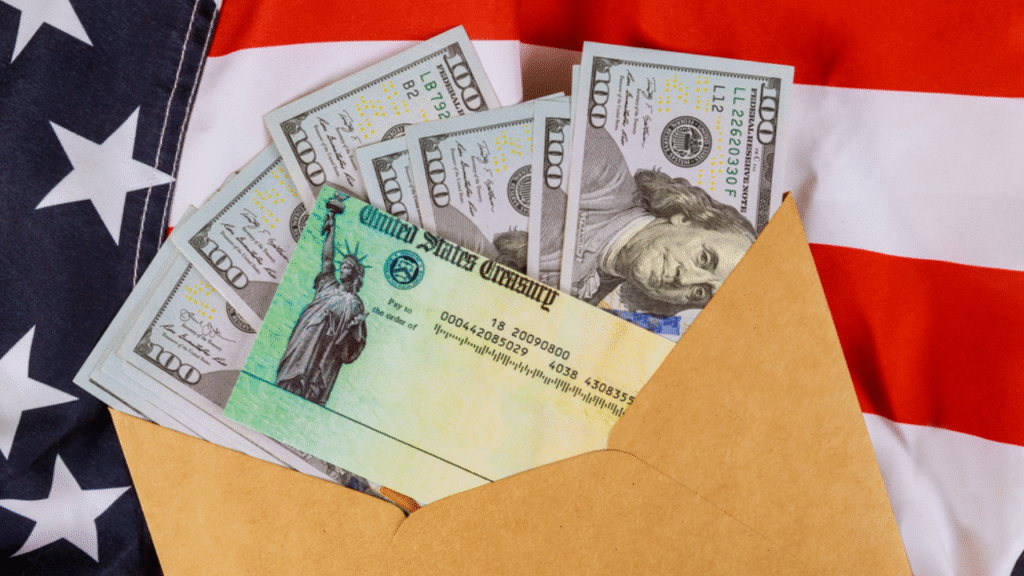Over the last decade, one federal stimulus check program has silently supported American families—providing over $15,000 in benefits to eligible individuals. And now, in 2025, it’s coming back.
This program isn’t one of the widely known one-time payments like the COVID relief checks. Instead, it’s the Alaska Permanent Fund Dividend (PFD)—a yearly payout for Alaskan residents that’s funded through the state’s oil revenues. While it technically isn’t called a “stimulus check,” for thousands of Alaskans, it has served that exact purpose.
Let’s break down how this works, what’s expected in 2025, and why this could matter not just for Alaska, but potentially as a model for other states.
What Is the Alaska Permanent Fund Dividend (PFD)?
The Alaska Permanent Fund Dividend is a unique benefit paid out annually to eligible Alaskan residents. It comes from the Alaska Permanent Fund, a state-owned investment fund created in 1976. The idea was simple: set aside a portion of oil revenue earnings for future generations and give residents a share of that wealth every year.
Since its first payout in 1982, the PFD has sent out billions of dollars to Alaskans. Over the past 10 years alone, the total amount received by many eligible individuals has crossed $15,000.
For many families, especially in rural parts of Alaska where the cost of living is higher, this dividend has acted as a vital economic boost—often used for heating, transportation, and other essentials.
How Much Do Alaskans Typically Receive?
Payouts vary year by year depending on oil revenue performance and legislative decisions. For instance:
- In 2022, the PFD payment was around $3,284, the highest ever due to surplus oil revenue and an energy relief bonus.
- In 2023, it dropped to around $1,312, reflecting budget constraints.
- On average, over the last decade, Alaskans have received roughly $1,000 to $1,500 annually.
If we total the average payouts from 2013 to 2023, an eligible Alaskan would have received over $15,000 in total.
To see a full list of historical payments, visit the official Alaska Department of Revenue website.
Is the PFD Returning in 2025?
Yes—and the process is already underway.
In 2025, the Alaska Permanent Fund Dividend is officially set to continue, and discussions in the Alaska State Legislature suggest the payout could once again be significant. However, the exact amount for 2025 will be finalized later this year, based on oil prices, fund earnings, and budget negotiations.
Applications for the 2025 PFD opened on January 1, 2025, and closed on March 31, 2025. Eligible residents who submitted their applications on time and meet residency requirements can expect payments to begin arriving in October 2025.
Details about eligibility and timelines can be found on the Alaska PFD application portal.
Who Is Eligible for the 2025 PFD?

To qualify for the 2025 PFD, an applicant must:
- Be an Alaska resident for the entire calendar year 2024
- Intend to remain an Alaska resident indefinitely
- Not claim residency in another state or country
- Not have been sentenced or incarcerated for a felony during the year
- File a completed application between Jan 1 and March 31, 2025
Children and dependents can also qualify if claimed by a guardian who meets the above rules.
How Is This Program Like a Stimulus Check?
Although not officially branded as a “stimulus program,” the PFD functions in the same way for Alaskan families:
- It provides direct cash payments
- It requires no repayment
- It boosts household income
- It stimulates local economies, especially in remote communities
In fact, many economists refer to it as one of the few universal basic income experiments in the U.S., given its annual, unconditional structure.
Why This Matters for the Rest of the U.S.?
With ongoing discussions around universal basic income, climate dividend programs, and resource-based state wealth funds, the Alaska PFD is often used as a real-world example of how states can return resource wealth directly to their residents.
As the U.S. continues to face inflation, income inequality, and high cost of living pressures, programs like these are gaining attention nationwide. While other states have not replicated Alaska’s oil revenue model, there’s growing momentum to explore similar strategies.
Some states, like California and Minnesota, have launched their own state-based rebate or inflation relief checks—but those have often been one-time efforts. The Alaska PFD’s consistency makes it stand out.
What Can You Expect in 2025?
Here’s a quick summary:
- Yes, the PFD is back in 2025
- Payment amounts are not final, but estimates suggest it could be around $1,200 to $1,600
- Payments will start in October 2025
- Applications closed on March 31, so only timely applicants will qualify
- It remains one of the longest-running stimulus-like programs in the U.S.
Final Thoughts
The Alaska Permanent Fund Dividend has quietly changed lives for decades, and in 2025, it’s poised to continue doing so. While it may be limited to Alaskan residents, its success opens up a broader national conversation about how states can directly support their citizens—especially in times of financial stress.
As always, check your eligibility, monitor updates from the Alaska Department of Revenue, and prepare for the payout if you’re an Alaskan.





